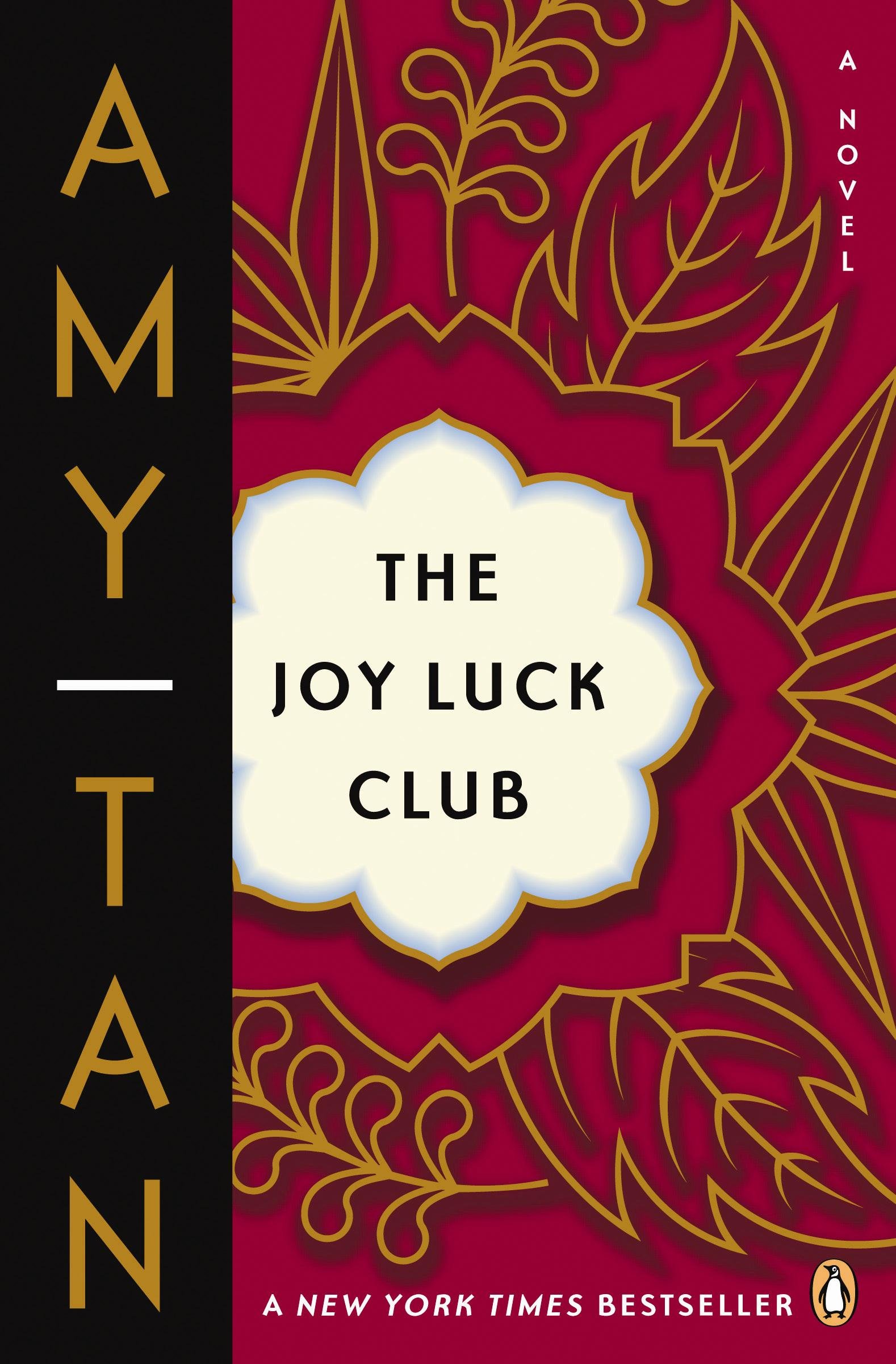Amy Tan: "The Joy Luck Club" (Fiction)
Challenging norms and convention feel like an instinct for our millennium generation. Amy Tan (1952 — ) tells heartfelt stories in the first person point of view of four pairs of Chinese mothers and Chinese American daughters during and after WWII in China and the US, investigating the value of family legacy and memories within the scope of an era's history.
Four Chinese women have immigrated to San Francisco, US, during WWII. Every week, they convene as the Joy Luck Club to play mahjong and share life stories. Their experiences are mostly tragic, neither joyful nor lucky, but the name joy luck club is full of hope — essential as an overarching narrative art for the linked collection of 16 short stories as a whole. She encapsulates this idea when she writes “each week, we could hope to be lucky. That hope was our only joy.” This sentence echoes the name Joy Luck Club.
The book explores the contrast between Chinese mothers of nostalgia and American-born daughters. The mothers live through trauma in turbulent times in China, with wars, parents, arranged marriages and lost children. Their daughters have similar traumas as well, but the daughters are in a far safer physical situation than their mothers.
The daughters are most familiar with their mothers, as daughters’ beloved authority. However, the daughters are born in a peaceful time in the urban US. The group of mothers tell their stories but see their own daughters, who are “ignorant, just as unmindful of all the truths and hopes they have brought to America”, who “think they (mothers) are stupid when they explain things in fractured English.” Mothers hope their daughters can embody the Chinese history and experiences of their own mothers. However, the daughters, who are in a different position, cannot understand their mothers, who have their history and regrets, who have experienced more.
Daughters speak perfect American English while mothers speak fractured English. One sentence that captures this language tension is “I think my mother’s English was the worst, but she always thought her Chinese was the best.” This contrasting sentence structure repeats many times in the book. Another example is “I (daughter) talked to her (mother) in English, she answered back in Chinese.” It is a simple and brief sentence, but every word tells. Mother acknowledges their fractured English, but they are proud of their Chinese. The mothers see the world through their mother tongue, Chinese culture, and war experience in her era in China, which they carry to the US. There lies a rooted difference of perception in the world — daughters understand the world in English, mothers understand the world in Chinese. The conflicts and power stem from the legacy and tradition from the past generation to the next, and a bridge between two cultures and languages.
Amy Tan talks about her philosophy of language and culture in her essay “Mother Tongue”:
Some say they understand none of it, as if she were speaking pure Chinese. But to me, my mother's English is perfectly clear, perfectly natural. It's my mother tongue. Her language, as I hear it, is vivid, direct, full of observation and imagery. That was the language that helped shape the way I saw things, expressed things, and made sense of the world.
Amy Tan wrote this novel as a semi-autobiography of her and her mother. She attempts to “capture her [mother’s] intent, her passion, her imagery, the rhythms of her speech and the nature of [her mother's] thoughts”, not only in voices of this novel, but also through the changes of the fictional daughters.
The linked stories unfold the daughters’ realization of their identity and mother tongue. For example, the first and last stories show that, through inner struggle and exploration, Jing-Mei realizes that Suyuan’s (her mother) past is rooted in her blood and behaviors without herself knowing. To Jing-Mei, her mother tongue is Suyuan’s daily usage of language — “their special language, half in broken English, half in their own Chinese dialect.”
The collection has a strong pacing and covers a large span of time. We go from density to the most crucial moments, symmetry to dialogues and scenes of attention. In the last story ‘A Pair of Tickets’, Jing-Mei goes to China and confronts her lost twin sisters with whom she is not able to communicate. Several epiphanies gradually unfold until the climax — “‘No, tell me in Chinese,’ I interrupt. ‘Really, I can understand.’” Until she sees the Chinese meaning of her own name Jing-Mei 竟妹 — “be like her sisters”, she comprehends that it is always the Chinese memories that haunts her mother, the regret of giving up twin girls, and the hope during wars. She learns that she always embodies the marks of her mother.
The group of mothers in the Joy Luck Club have tragic stories, but they still find a way of making fun of their experiences. They make fun of the fact that, even though they own tens of thousands or yuan, they are still poor because money is worthless — “Even toilet paper was worth more. And that made us laugh harder, to think a thousand-yuan note wasn’t even good enough to rub on our bottoms.” The voice is from a mother who has experienced all the hardships of life, but the language of the voice is funny. The comic tone reveals what humans do in face of trauma — humor. Rather than painting a hardship, the voice provides readers with a sense of truth and deep realism, e.g. “I didn’t have enough feeling left in my body to cry” and “‘I thought I had lost everything, except these two things,” she murmured. “And I wondered which I would lose next. Clothes or hope? Hope or clothes?’” The language is not simply comic, but comic enough to almost make me cry and unbearable — a sense of tragedy. It is impressively amazing how Tan manages to craft the voice of comedy into the reality of tragedy while bringing hope to the audience.
It is a delicate crafting of her characters’ emotions through compelling conflicts, variations and drama. The characters grow from their innocent and vulnerable young selves to become sophisticated and after experiencing hardships. Tragedy is heavy, but Tan nuances the story with sensitivity and complexity. Despite sadness and duress, the lines are full of hope and humor, forgiveness and reconciliation.
— Wenxin Tang
Emerging Voices Poetry Intern


